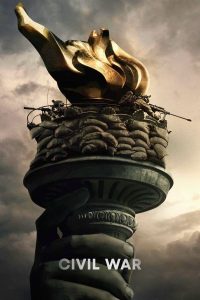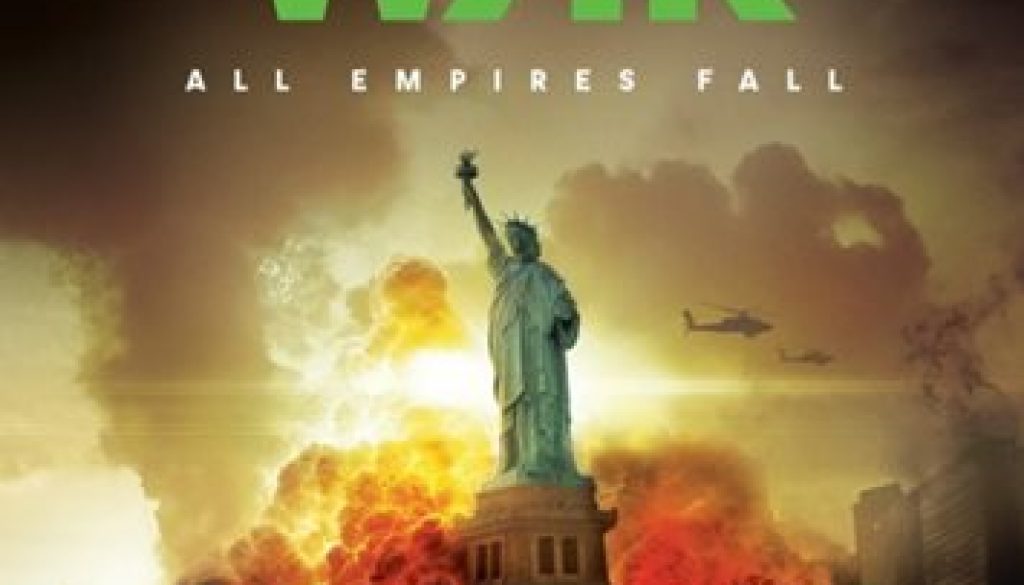Civil War – Dir: Alex Garland (Film Review)
Civil War, A24’s Most Expensive Film ever, Is a bold, visually immersive vision of an America ravaged by violent conflict.
Starring: Kirsten Dunst, Stephen McKinley Henderson, Wagner Moura, Cailee Spaeny
 America is engulfed in a second Civil War. The Star-Spangled Banner doesn’t flutter in the wind with 50 stars. Only two. Separatist forces are rapidly moving towards the capital to overthrow a government led by third-term President Nick Offerman. The film opens with President Offerman rehearsing a speech that boasts about a supposed great victory over these separatist forces. Interwoven is real news footage of America in decay. “All Empires Fall” is used in the film’s promotional materials. The stage is set. Civil War imagines a not-so-dystopian future where America’s great metropolises, vast plains and rugged mountain ranges have transformed into a battleground.
America is engulfed in a second Civil War. The Star-Spangled Banner doesn’t flutter in the wind with 50 stars. Only two. Separatist forces are rapidly moving towards the capital to overthrow a government led by third-term President Nick Offerman. The film opens with President Offerman rehearsing a speech that boasts about a supposed great victory over these separatist forces. Interwoven is real news footage of America in decay. “All Empires Fall” is used in the film’s promotional materials. The stage is set. Civil War imagines a not-so-dystopian future where America’s great metropolises, vast plains and rugged mountain ranges have transformed into a battleground.
You’re dropped right into the action alongside the dispassionate photojournalist Lee Miller. A suicide bomber wrapped in the American flag detonates in the middle of a protest. The excellent Kirsten Dunst plays Miller. Alongside Dunst is thrill-seeker Joel (Wagner Moura), the naïve whizz-kid Jessie (Priscilla‘s Cailee Spaeny) and mentor Sammy (Stephen McKinley Henderson). It’s a shame Henderson’s character isn’t given more screen time. His wisdom and humanity bring warmth to Civil War‘s cold and clinical storytelling. If you’ve seen Garland’s previous features, Ex-Machina, Annihilation and Men, you’ll know that his films are often detached from their subjects.
Surprisingly but smartly, Civil War follows the tried and true narrative structure of a road movie. In pursuit of an interview with the president, a scoop that would win a Pulitzer Prize, this group of journalists must travel to D.C. Unable to take the bombed-out highways, a journey that would take several hours now takes days as Dunst and Co. navigate the perilous back roads. On this ride to the capital, the state of America is brought into razor-sharp focus. The dollar is worthless, power blackouts are frequent, and fuel is a rare commodity. Displaced persons camps provide food, water and shelter. But some choose to ignore reality and isolate themselves from the world and its horrors.
Rather than focusing on those on the frontline, as Saving Private Ryan does, which Garland names as an influence, Civil War focuses on those who capture the horror of war. In foregrounding the perspective of Miller and Jessie, the film has more to say about the ethics of war photography than the ideologies that led 48 states to succeed. Garland doesn’t care to explain what the separatist forces are fighting for, instead choosing to remain frustratingly a-political. It may be a reductive line of questioning to ask, “How did America become so divided?” when you can look at the news, but context is necessary. The film’s indifference and political prevarications leave you scrambling to build an internal logic to make sense of this world. Civil War wants to be a bold cautionary tale, but it is a hollow and exasperating provocation.
Civil War excels if you’re okay with the film not commenting on the specifics of the conflict it depicts. Cinematographer Rob Hardy delivers his finest work. Action scenes are immersive, flirting with the immediacy and viscerality of a war documentary. The film’s climax, set on the manicured lawn and in the tight corridors of the White House, is taught and terrifying. With a chromatic sheen, Civil War is grippingly real as there is no escaping its haunting immediacy. I may have gripes with the film’s vagueness, but as armed militias swarm the capital, you cannot ignore its spectacular, awe-inspiring scale. The film demands to be seen on the biggest screen possible, not because of what it’s about but because it’s a ghoulish visual feast.
Thomas Giblin
Civil War opens in Cinemas on Thursday, April 11th. Click here for showtimes and tickets.
- VÏKAE – Tы мой океан (You’re My Ocean): 13th Floor New Song Of The Day - July 27, 2024
- Tami Neilson Announces “Neilson Sings Nelson” Tour - July 26, 2024
- R.I.P. John Mayall: British Blues Pioneer Age 90 - July 24, 2024

